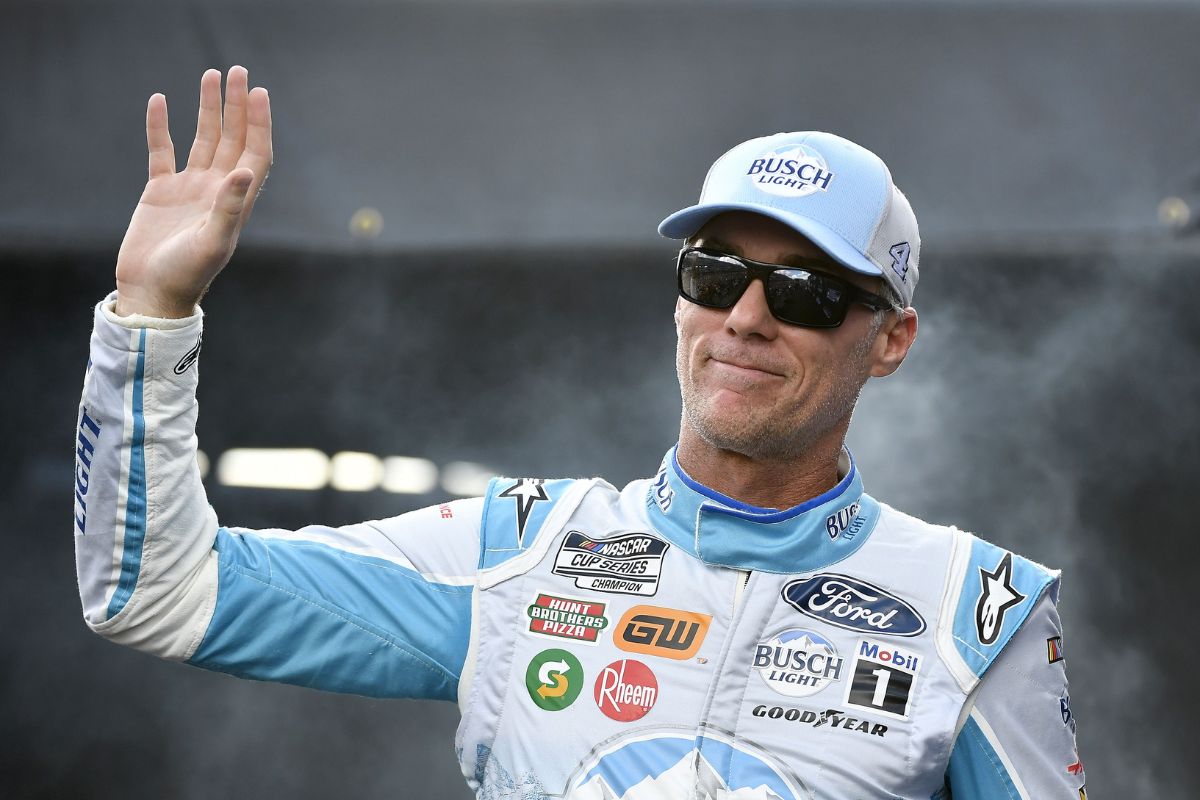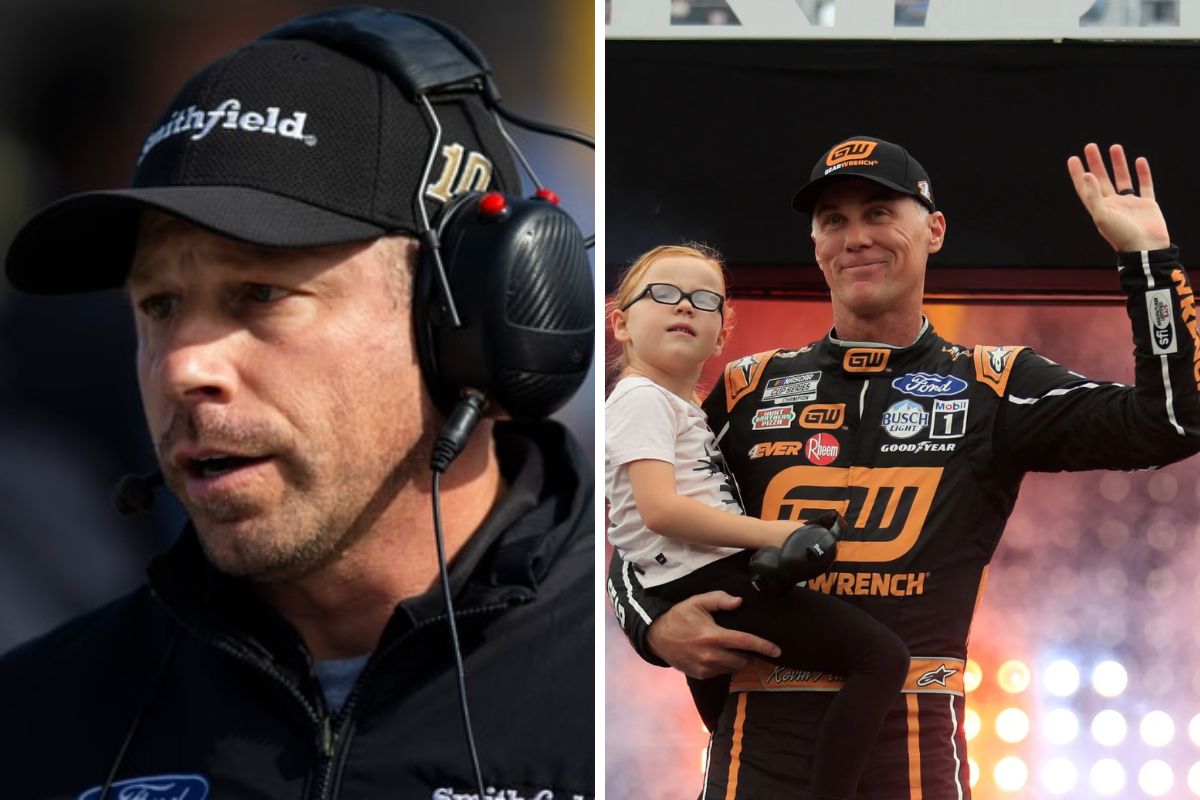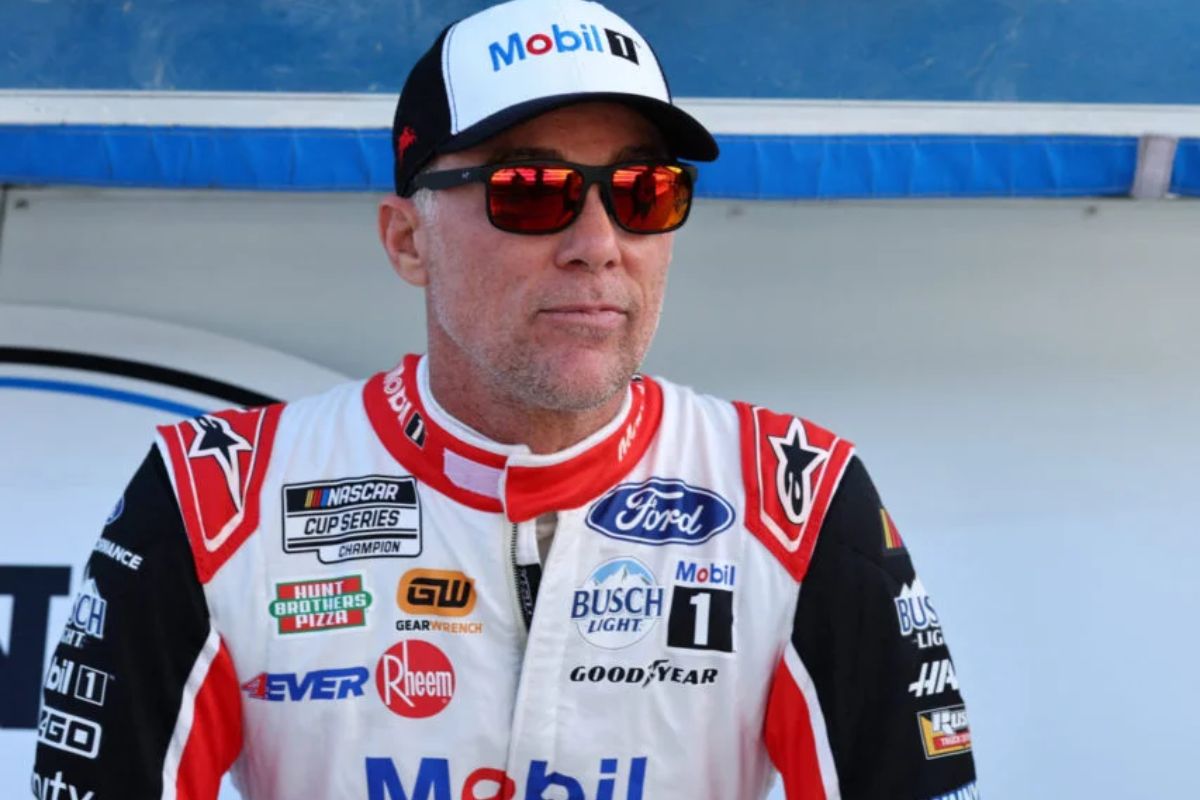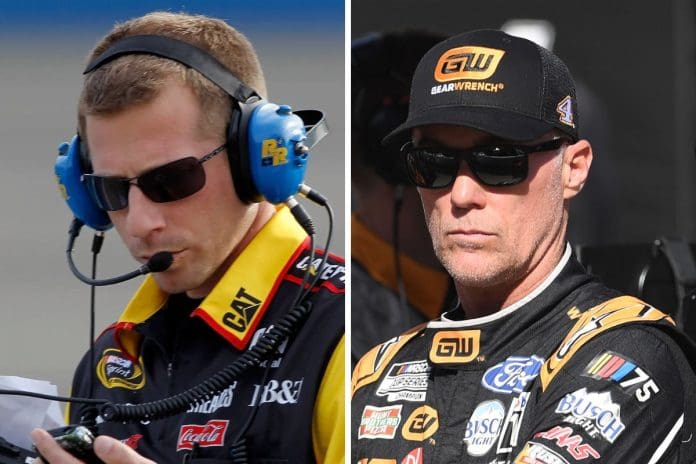Blickensderfer Condemns Harvick’s Theory: In the recent NASCAR event at Dover, Drew Blickensderfer publicly countered Kevin Harvick’s controversial assertions about the safety of Next Gen Ford cars, specifically addressing the issue of foam fires. Blickensderfer’s detailed critique not only shows the intricacies of NASCAR’s engineering practices but also underscored the rigorous safety protocols that govern the sport. His response was an attempt to clarify the misinformation surrounding the use and safety of advanced materials in racing vehicles, thereby aiming to restore trust among drivers and fans.
Key Takeaways
- Blickensderfer refuted Harvick’s safety foam fire allegations, emphasizing the complexity of automotive engineering in racing.
- He highlighted that recent car fires were not due to faulty parts supplied to the teams.
- Advanced materials and rigorous safety standards are used in Next Gen Ford cars, meeting NASCAR’s requirements.
- Continuous improvement efforts are made through detailed incident analysis to enhance car design and safety.
- Extreme racing conditions can push materials beyond their limits, occasionally leading to unexpected outcomes like fires.
Ryan Preece’s Early Exit
Ryan Preece’s participation at Dover concrete oval track was abruptly curtailed due to a fire in his #41 Morton Building Ford, forcing him to retire after just 66 laps. This incident not only marked a premature end to Preece’s race day but also highlighted a recurring issue with the #41 car. The early exit led to a dismal 37th place finish, contributing to Preece’s seventh last-place finish in the Cup Series. This particular event is part of a broader pattern of reliability issues for the #41, which has now failed to finish a race 60 times, with fires accounting for four of these instances.
Analyzing the technical aspects, the occurrence of a fire suggests potential vulnerabilities in the vehicle’s design or maintenance, particularly in its fuel delivery or electrical systems. Such incidents raise concerns about safety standards and the robustness of fire suppression mechanisms in place. For a team and a manufacturer, repeated issues of this nature not only impact race outcomes but also can damage reputational value and question reliability, prompting introspective technical reviews and possibly, extensive overhauls.
For Ford, this incident adds to a significant statistic – being the 1,034th non-finish for the manufacturer in NASCAR’s rigorous environments. This figure not only highlights the challenges inherent in motorsport but also serves as a critical data point for ongoing engineering enhancements.

Kevin Harvick’s Allegations
Kevin Harvick’s concerns about the safety foam fires in the Next Gen Ford cars have stirred significant attention in the racing community. Initially, these allegations pointed to defective components as the primary cause of these incidents. However, an alternative perspective from an insider associated with Tony Stewart has emerged, bringing a new layer of complexity to the issue. This insider suggests that the cause might not solely lie with the car parts, thus questioning the validity of Harvick’s initial claims.
“I’m sure it’s just crappy parts on the race car like we’ve seen so many times. They haven’t fixed anything. It’s kind of like the safety stuff. We just let it keep going and keep going.”-harvick
- Historical Precedence: The Next Gen cars have had a fraught history with safety issues, which lends some credence to concerns about their reliability.
- Insider Testimony: New information shows there could be other reasons, maybe proving the car parts blamed first aren’t really responsible.
- Technical Complexity: Understanding the precise mechanics of how these fires start is important and could indicate broader systemic issues rather than specific faulty parts.
- Safety Protocols: The response to these allegations must involve a rigorous reevaluation of safety protocols to guarantee driver safety.
Blickensderfer’s Response
Addressing Kevin Harvick’s fiery claims, Blickensderfer presented a detailed rebuttal that emphasized the complexity of the issues involved with the Next Gen Ford cars. He highlighted the multifaceted nature of automotive engineering, especially in the such environment of professional racing. Blickensderfer systematically dissected the assertion that substandard parts were to blame, suggesting instead that the incidents involving Harvick and Preece’s vehicles could be attributed to a confluence of factors, including but not limited to, the unique demands placed on these vehicles under race conditions.
“That was self-inflicted.”-blickensderfer
Blickensderfer explained how Next Gen cars are equipped with advanced materials and components designed to meet rigorous performance standards. He pointed out that each component undergoes extensive testing and quality assurance procedures before being deployed in the field. However, he acknowledged that even with stringent controls, the extreme conditions of racing could push materials to their limits, potentially leading to unexpected outcomes.

Blickensderfer’s Explanation
In his defense of NASCAR, Blickensderfer emphasized that the recent car fires were not caused by faulty parts supplied to the teams. He highlighted the complexities of race car engineering and the rigorous safety standards that NASCAR implements. Blickensderfer’s analysis leaned heavily on the notion that while the incidents of fire are alarming, they are not indicative of systemic issues within NASCAR’s part distribution or the quality control processes that accompany them.
“That was the bolts between the headers and the collectors keeping everything together. They were not installed correctly and it was allowing the collectors to come dis-attached from the headers, kind of fall on that rocker box and cause an issue. So, it was a self-inflicted error, a little change in process that someone didn’t catch and it was close to happening on all of our cars to be honest with you. They were unfortunately the victim of it but when we got back to the race shop all of our cars were close to having a similar issue. So obviously that gets rectified quickly. Everything gets torn out of our Kansas cars and fixed.”-blickensderfer
- Safety Protocols: NASCAR’s continuous evolution of safety measures aims to minimize risks but cannot eliminate them entirely in a high-intensity sport.
- Engineering Complexity: The intricate systems within a race car can interact in unexpected ways, leading to rare but dramatic outcomes like fires.
- Rigorous Inspections: Teams and NASCAR officials conduct thorough inspections before and after races, aiming to catch potential failures before they become critical.
- Quality Control: The parts used in NASCAR vehicles undergo stringent testing and quality assurance to meet high performance and safety standards.
- Transparency and Communication: NASCAR’s open communication about incidents encourages a culture of improvement and learning within the racing community.
Ryan Preece’s Frustration
Ryan Preece’s noticeable frustration following the recent incident marks a stark contrast to his composed reaction after last year’s Daytona mishap. Whereas the earlier event saw him attributing the dramatic barrel-flip to unavoidable race contact and the notorious grassy track edges, his current discontent suggests a deeper disquiet.
Analyzing Preece’s situation, one could argue that his frustration is not merely a reaction to a single event but a manifestation of broader challenges within his racing environment. Last year, his resilience was remarkable, publicly supporting his team despite the spectacular crash. However, the recurrence of issues, perhaps linked to team strategy or vehicle performance, appears to have breached his threshold of tolerance.
Preece shared, “I felt like I was on fire. I went the first 70 laps just trying to push through and then it got so bad that I couldn’t put my hands on the wheel. I was worried that an oil line or something would melt and then the whole car gets engulfed in fire and I don’t want to be trapped in there having that happen, so I pulled off.”

News in Brief: Blickensderfer Condemns Harvick’s Theory
The discussion between Harvick and Blickensderfer at the Dover showdown highlights the delicate balance between safety concerns and technological advancements in NASCAR’s Next Gen cars. Blickensderfer’s detailed rebuttal of Harvick’s safety foam fire allegations emphasizes NASCAR’s strict safety standards and dedication to continuous technological improvement. This exchange not only explain the technical complexities inherent in professional racing but also reinforces the sport’s commitment to upholding high safety protocols amidst evolving automotive technologies.
Our Reader’s Queries
Q: Does Kevin Harvick own a NASCAR team?
A: Kevin Harvick, Inc., commonly known as KHI, is a racing team founded by NASCAR driver Kevin Harvick and his wife DeLana.
Q: How many cup championships does Kevin Harvick have?
A: Harvick clinched the Cup Series championship in 2014, along with Xfinity Series titles in 2001 and 2006, and a Daytona 500 victory in 2007.
Q: Who replaced Kevin Harvick?
A: Josh Berry is a NASCAR rookie who has joined Stewart-Haas Racing, replacing former Cup champion Kevin Harvick.
Also Read: Kevin Harvick Stunned by Kansas Stats Exposing Next-Gen Excuses


